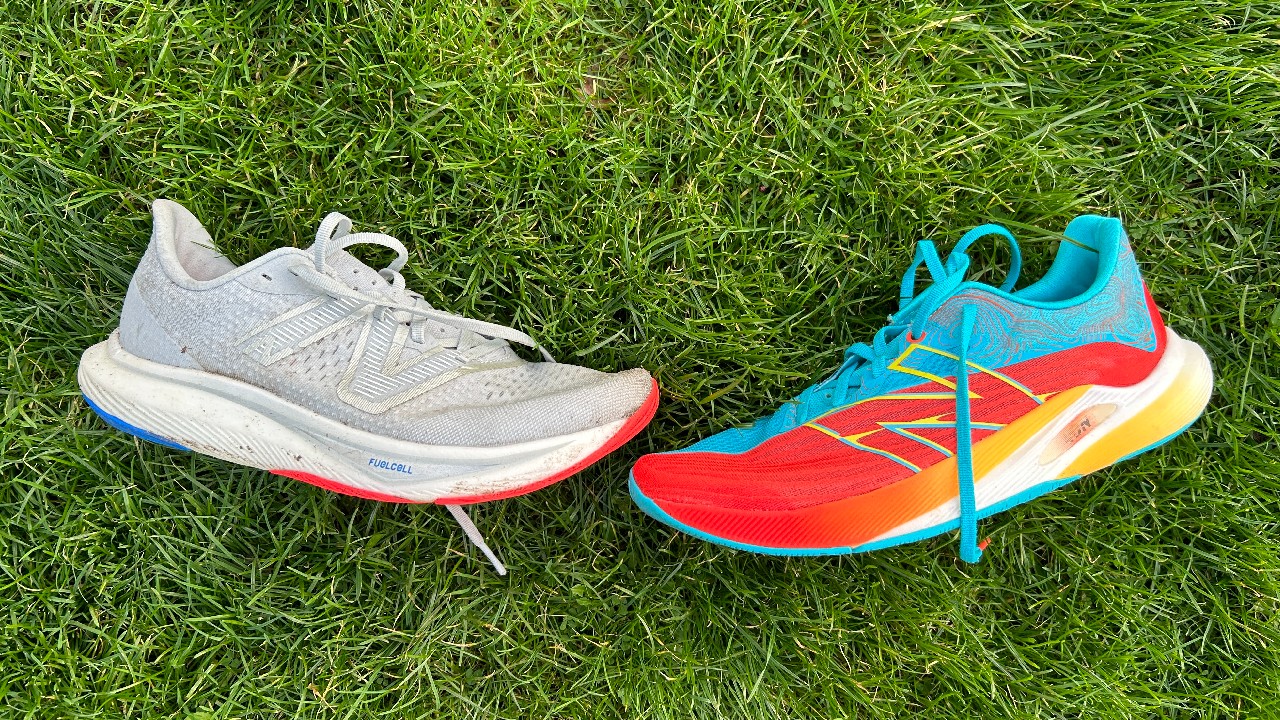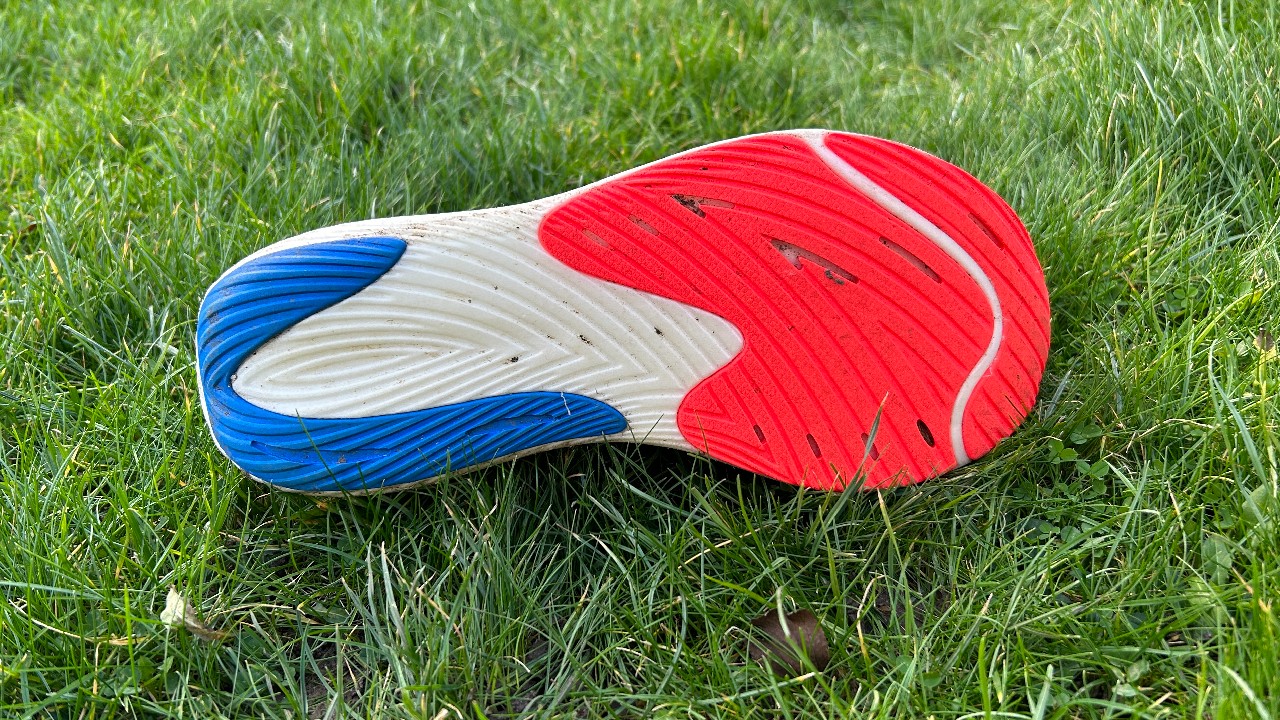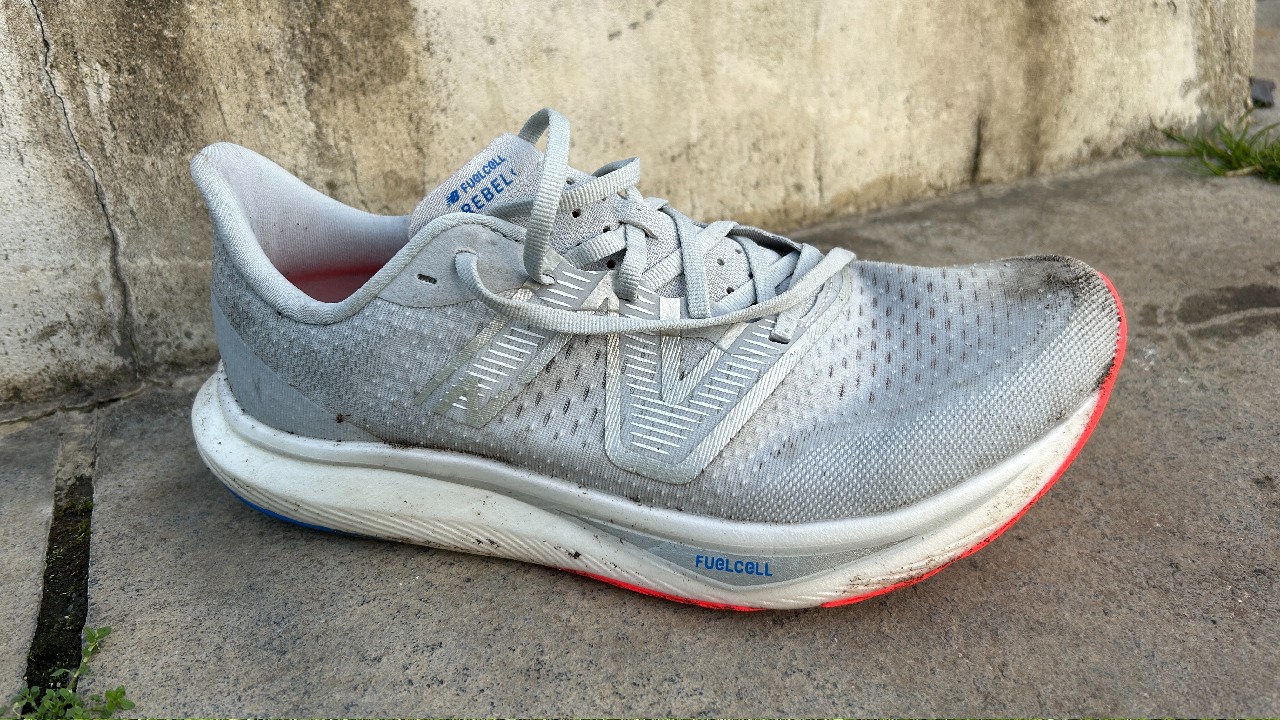Our Verdict
Seemingly small changes have made the Rebel v3 a surprisingly big upgrade on the Rebel v2, and it’s one of the best all-round running shoes available, especially if you prefer to train in a shoe without a plate in the midsole.
For
- Better for longer runs than the v2
- Light and bouncy FuelCell midsole
- More flexible than a plated shoe
Against
- Plated shoes are more efficient
- Not cushioned enough for all easy runs
You can trust Coach
The New Balance FuelCell Rebel v2 was very close to being a terrific running shoe, but I found that when doing longer runs it wasn’t quite cushioned enough and lost a lot of its bounce.
Happily, with the Rebel v3 New Balance has made minor adjustments that have fixed this problem, making it one of the best running shoes on the market. If you want a fast and fun daily trainer without a plate, it’s the perfect choice.

New Balance FuelCell Rebel v3 Review: Price And Availability
The Rebel v3 launched in August 2022 and costs $130 in the USA and £130 in the UK.
Design And Fit
New Balance has made small changes throughout the Rebel v3, but it’s the updates to the nitrogen-infused FuelCell midsole that are the most important. The Rebel v3 is 1.5mm higher than its predecessor, and it’s also wider in the forefoot.
This extra cushioning doesn’t make the Rebel v3 a particularly high stack shoe – New Balance hasn’t given the official stack height but it still seems to be under 30mm at the heel – but it does change the feel of the ride when tackling longer runs.
The Rebel v3 has a 6mm drop, and weighs slightly more than its predecessor at 7.6oz/216g (compared with 7.2oz/204g), which reflects the slightly bigger midsole as well as the changes to the upper, which is now a more robust, thicker mesh with extra reinforcement in certain areas to increase durability.

There have also been changes to the outsole, which has rubber coverage on the forefoot and heel but uses a different material to the v2 that should prove more durable – a welcome update since the v2’s outsole did wear down fairly quickly. That said, there is still a lot of exposed foam on the outsole and the Rebel v3 is unlikely to be as hard-wearing as many daily trainers with more substantial outsoles.
Sign up for workout ideas, training advice, reviews of the latest gear and more.
I found that the Rebel v3 had quite a tight fit, which was the same for the first two versions of the shoe. I was OK in my normal size, but going half a size up would create a more comfortable fit, especially on longer runs.
How I Tested This Shoe
I have run 55km in the New Balance Rebel v3, doing a mix of daily training including a couple of speed sessions and several easy runs. I have also tested the previous two versions of the shoe.

Running Performance
My first run in the Rebel v3 was an enjoyable 10K progression run moving from easy to steady pace, and I didn’t really notice any differences from the Rebel v2. It’s a lightweight shoe that provides a bouncy ride while still having a lot of ground feel because the stack isn’t very high.
While I enjoyed the run I feared the Rebel v3 would have the same problem as the Rebel v2; that it would “bottom out” on longer runs where the foam stops providing as much bounce and cushioning once you pass around 12km.
However, the extra foam in the midsole has certainly improved matters on this front. I did a hard hour in the shoe running around 16km and the midsole felt just as bouncy throughout. Although it’s definitely better than the v2, for runs over 25km I would want more cushioning than the Rebel v3 offers.
It’s a great shoe for speed sessions, thanks to the light design and bouncy FuelCell midsole. You don’t get the same efficient feeling that you get from a plated shoe like the Asics Magic Speed 2, which I used in the same session as the Rebel v3 to compare the two, but the Rebel v3 is still very fast.
On longer speed sessions, the benefits of a plate in delaying fatigue and helping you tick over will come into play. While I’d rather race in a plated shoe than the Rebel v3, for daily training it has an enjoyable ride and it’s still very quick.
The Rebel v3 is also comfortable enough for most easy runs. The one exception for me was a recovery run the day after a particularly long run, when I found that it didn’t provide enough protection for tired legs – I’d rather be in a max-cushioned shoe like the New Balance More v4 to shuffle through those runs.
Despite not having a lot of rubber on the outsole, the Rebel v3 gripped well for me on wet pavements and even during one run on a slightly muddy trail. I haven’t seen any undue signs of wear on the outsole, but with the soft midsole foam and limited outsole coverage, I wouldn’t expect the Rebel v3 to be the longest-lasting shoe.
Is The New Balance Rebel v3 Worth It?
The Rebel v3 is a great running shoe, and one of the more enjoyable daily trainers available. It’s versatile enough to handle most runs, even if I’d prefer to use plated shoes for long speed sessions and races, as well as having a more cushioned option for recovery runs.
When going up against the best all-round running shoes like the Saucony Endorphin Speed 3 and Asics Magic Speed 2, the Rebel v3 does lose ground by not having a plate. However, some runners will prefer the flexible feel of the Rebel v3, and it’s certainly cheaper than those shoes.
The Hoka Mach 5 is another big rival that also doesn’t have a plate in the midsole. I rate the Mach 5 very highly, and choosing between it and the Rebel v3 might come down to your preference in ride feel. The Mach 5 is smooth and more comfortable over long distances in particular, while the Rebel v3 is softer and bouncier, and feels faster on shorter reps.

Nick Harris-Fry is a journalist who has been covering health and fitness since 2015. Nick is an avid runner, covering 70-110km a week, which gives him ample opportunity to test a wide range of running shoes and running gear. He is also the chief tester for fitness trackers and running watches, treadmills and exercise bikes, and workout headphones.


